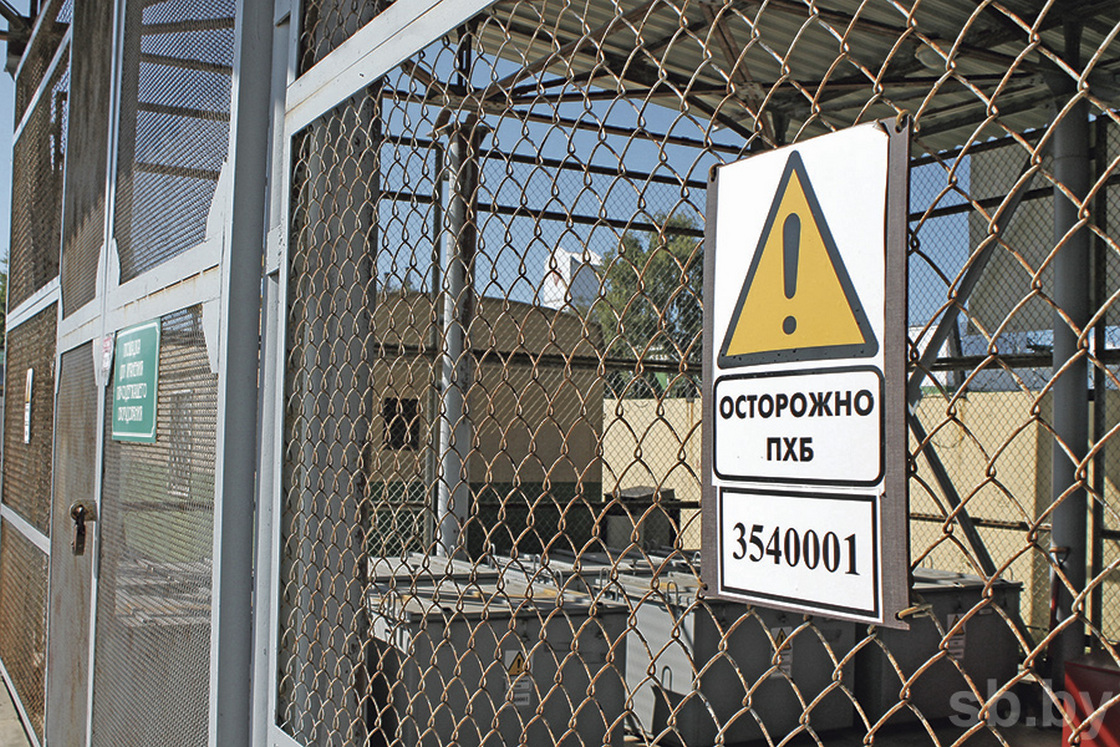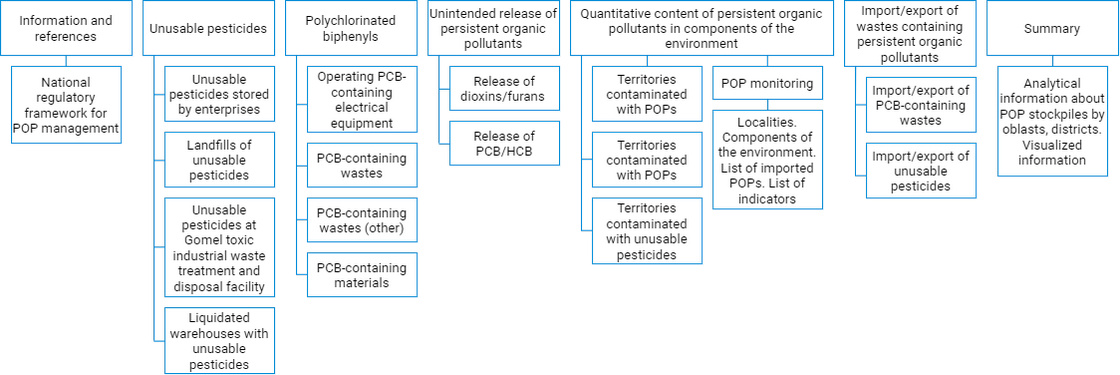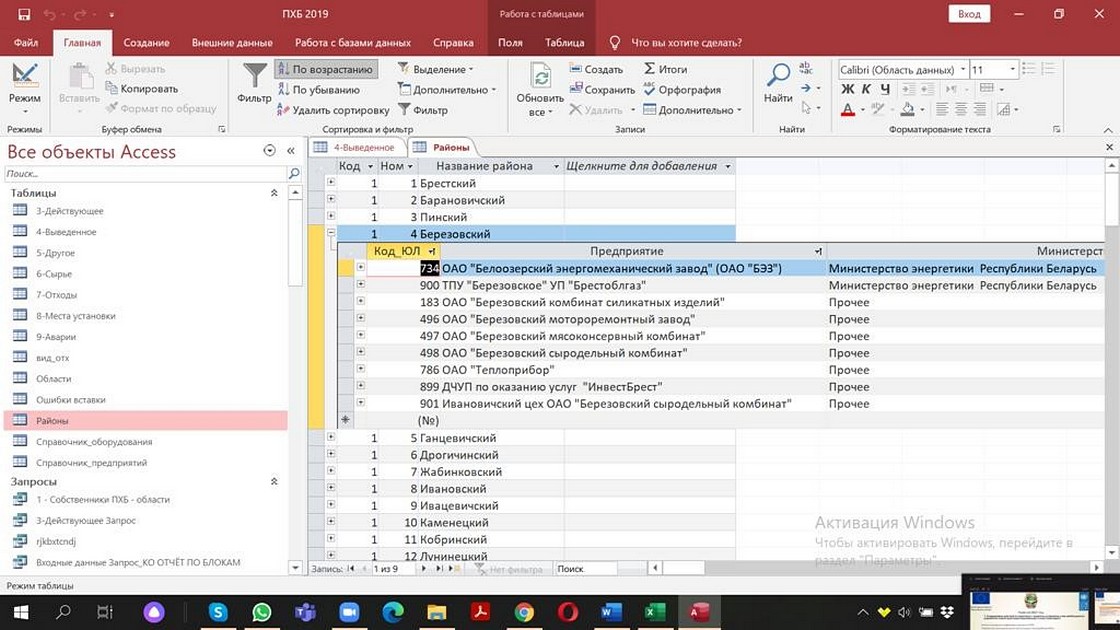PCB inventory in Belarus
Polychlorinated biphenyls (PCB) are hazardous substances that pose a serious threat to human health and the environment even in low concentration, so the Stockholm Convention on Persistent Organic Pollutants (POP) prohibits new production and requires eliminating use of these substances.
Compliance with the Stockholm Convention and prevention of human beings and the environment from exposure to PCBs are impossible without identification of their sources and estimation of PCB stockpiles in equipment, materials, and wastes.
Only inventory of PCB-containing equipment and materials ensures the most effective estimation of PCB stockpiles, and a Belorussian inventory may be regarded as a successful solution.
Hazardous wastes and equipment
Most PCBs are dielectric and coolant fluids that were heavily used in industrial transformers and capacitors in the last century.
Although the production of hazardous electrical devices was closed back in the early 1990s, they are still in operation at some enterprises but the Stockholm Convention requires Belarus to stop operating PCB-containing equipment by 2025.
Besides equipment, inventory—with the subsequent disposal of—should cover PCB-containing wastes:
- capacitors, transformers and other decommissioned PCB-containing equipment that lost consumer properties;
- unused or drained from equipment PCB-containing liquids;
- fluids for flushing PCB-containing transformers or containers;
- containers stained with PCBs;
- consumables (cloth, sawdust, protective clothing, gloves) used for liquidation of PCB-containing liquid spills;
- soil contaminated by PCB spills;
- engineering structures and constructions contaminated with spilled PCBs.
Creation of the inventory
For the first time, Belorussian PCB stockpiles were estimated in 1999 through a comparison of production and consumption data in the former Soviet Union.
In 2003 – 2004, as part of the State research and technology program, Environmental Safety, the first large-scale PCB inventory was made and its results formed the basis of the PCB database.
In 2005, as part of the project GEF TF053865, Enabling activities related to the implementation of the Stockholm Convention on persistent organic pollutants (POPs) in the Republic of Belarus (2005–2006), the inventory continued.
Today management of PCBs in Belarus is regulated by the Guidelines on equipment and wastes containing polychlorinated biphenyls, as approved by decision of the Ministry of Natural Resources and Environmental Protection of the Republic of Belarus No. 62 dated 24.06.2008. The guidelines describe requirements for inventory and reporting of PCB-containing equipment.
Inventory procedure
Responsibility to keep records of PCB-containing equipment and wastes is placed upon their owners. The owner appoints a commission which incorporates environmental experts and holds the annual PCB inventory.
The sources of PCB data are record keeping of PCB-containing equipment, places of its operation and storage, PCB-containing materials and wastes and places of their storage.
To identify equipment as PCB-containing, direct and indirect criteria are used.
The direct criteria include factory labels and technical documentation which directly show the presence of PCBs, and respective laboratory reports. The indirect ones are similarities in design, year of manufacture, and a manufacturer itself.
Transformers, capacitors (including small ones) are identified as PCB-containing equipment according to lists of PCB-containing equipment. If no labels or documentation are available, capacitors are considered containing PCBs.
For PCB concentration in dielectric fluids, capillary column gas chromatography method under STB MEK 61619-2003 is applied.
For PCB content in soils, gas chromatography method under STB 1126-98 (MVI.MN 2126-2004) is applied.
Detailed information about PCB-containing equipment and wastes and, if necessary, about incidents with PCB leakage is written in a printed form of the inventory report.
For further processing, completed inventory reports are submitted to an organization authorized by the Ministry of Natural Resources of Belarus, Bel Research Center Ecology.
Labeling
 https://www.sb.by/articles/gruz-s-pravom-peredachi.html
https://www.sb.by/articles/gruz-s-pravom-peredachi.htmlhttps://regions.by/2020/02/29/skoro-predpriyatiya-zavershat-ekspluatatsiyu-phb-soderzhaschego-oborudovaniya/
For purposes of hazard warning and easy record keeping, appropriate labels are used for:
- PCB-containing transformers and capacitors,
- installation sites of PCB-containing equipment,
- containers with PCBs, PCB-based liquids, PCB-containing wastes, and decommissioned equipment,
- temporary storage areas for PCB-containing wastes.
PCB-containing equipment and waste storage areas are labeled with hazard warning sign (black exclamation point in a yellow equilateral triangle) with wording “Caution! Contains PCB.” Containers with PCB-containing wastes bear labels showing type of waste, its amount and package date. For example, “Capacitors КС1, 2 pcs, КС2, 15 pcs. 15.03.2005” or “PCB-contaminated soil. 100 kg. 01.09.2005” or “PCB (Sovtol-10). 50 kg. 12.05.2006.”
Inventory and monitoring
The unified POP database includes not only data of PCB inventory reports but also from:
- state statistical reports on industrial waste management,
- reports on unintended POP release,
- National Environmental Monitoring System (namely, data on PCB- and pesticide-contaminated territories),
- analytical (laboratory) environmental control reports,
- reports on export and import of POP-containing wastes,
- other sources that may be requested under the law.
Several sections of the database contain organized information about POPs, territories contaminated with these substances, their release and content in components of the environment.

Polychlorinated biphenyls section contains information about organizations that own PCB-containing equipment, their subordination, location of PCB-containing equipment and wastes, amount of equipment by class and of PCB contained in such equipment.

View of POP data as a unified database ensures receiving up-to-date reliable information presented in the most clear and convenient way. The database contributes to fulfillment of obligations under the Stockholm Convention, implementation of main focal points of the state POP policy, organization of the POP monitoring system, protection of the environment and human health, and monitoring of transboundary movement of POPs.
The Belorussian PCB inventory — established with the help of the GEF financing and proofed to be effective — may serve as a model for implementation of similar inventories in other developing countries and countries with economy in transition.
In Belarus, UNIDO continues activities that other international agencies have earlier conducted under the GEF projects that helped to establish a reliable PCB inventory system and estimate PCB stockpiles, and lends its support to the country in elimination of the hazardous legacy of PCBs through establishment of PCB destruction facilities. Within the current project, Gomel toxic industrial waste treatment and disposal facility in the Chachersk district of the Gomel oblast will be equipped with a thermal waste treatment plant capable of destructing 1,600 tons of wastes annually.
